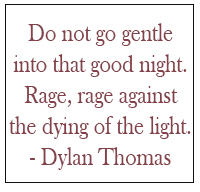 Last week I had to be a wet blanket.
Last week I had to be a wet blanket.
I had written some copy for an organization’s year-end appeal letter and asked for feedback.
I wasn’t excited about the response: “I sent it over to our new marketing guy to see what he could do with it, and I’m impressed! Now people might read it!”
I didn’t even have to open the document to know I’d probably disagree, but then I thought maybe I was being thin-skinned because I wrote the letter in the first place. So I opened it.
It was beautiful, with action photos, color blocked text and all the right words and statistics highlighted. And, yes, I read the whole thing. It wasn’t hard – lots of easy words, bullet points, bolded text.
The flyer outlined three programs that had served impressive numbers of children throughout the course of the year. It called out the recognition I would receive in response to my contribution. It highlighted the goals of the organization…. And all in a pleasing layout.
It made me think, what is the difference between marketing and development?
Marketing can generate brand recognition and excitement, and can be part of the development process. Development goes a step further to build a relationship that provides the incentive for people to take initiative even though they may never benefit personally.
Marketing is a precursor to a process wherein a transaction takes place to benefit the customer and the seller. Effective marketing can aid in making your fundraising effort visible, but ultimately, development is about a relationship that is not based upon a transaction, but on a common purpose.
This common purpose is about taking a stand and affecting change. It’s about ‘raging against the dying of the light,’ in other words. About not accepting things as they are but doing something about it. As a potential donor I need to know I can affect change through your organization. And because I know I can’t be a big enough donor to do this by myself, I need to know I’m being invited to be a part of a group with a common focus. Tell me a heart-warming story about the change I’m helping to affect and I will take it to heart and share it with others.
This rework of the annual giving letter outlined the product of the organization, but gave me no context. Who were these kids? Privileged children of community leaders or disadvantaged youth? Starving waifs or juvenile delinquents? Where had they come from and what were we celebrating in these pictures? What had their journey been?
It lacked the gravity a first hand account would have given. A story about a person, not a number, someone with whom I could identify whose life was changed because people like me gave last year.
It included no personal invitation. Was this flyer directed at me? From whom? It could well have been posted on a telephone pole for all the personalization it contained. As an established donor, I had to wonder: were the results outlined on the piece ones that I helped accomplish?
Where was the passion in this letter? The call to make a stand? To do something good, with no thought about our own benefit?
Would I give money in response to this? Would I be motivated enough to write a check? Click a button? Be moved to any action at all?
When it comes to inciting people to give, it’s not about how pretty the package is, but about how the message is delivered. Don’t be afraid to be the wet blanket when it comes to development. Make sure your donor is included in the discussion.
 I was working once for a nonprofit that received United Way funding. Every year United Way would ask for stories about the impact their support had had on someone we served. Every year, I would go around to each of our program officers and other staff to collect these stories.
I was working once for a nonprofit that received United Way funding. Every year United Way would ask for stories about the impact their support had had on someone we served. Every year, I would go around to each of our program officers and other staff to collect these stories.
 The importance of images in all forms of marketing has never been more pronounced than it is right now. Images in social media get more attention than copy alone. Images on the page and on the screen can do wonders to break up monotonous copy and keep the reader engaged.
The importance of images in all forms of marketing has never been more pronounced than it is right now. Images in social media get more attention than copy alone. Images on the page and on the screen can do wonders to break up monotonous copy and keep the reader engaged. Last week I had to be a wet blanket.
Last week I had to be a wet blanket.